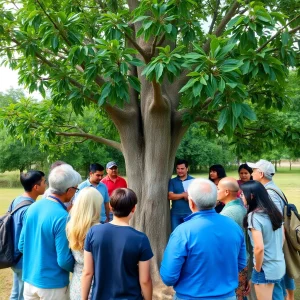Tropical Storm Helene Leaves Western North Carolina Reeling
Asheville has been buzzing with conversation about the aftermath of Hurricane Helene, which ripped through the region, leaving a significant toll on local ecosystems. The storm, described as the most powerful to hit western North Carolina in nearly 35 years, has caused serious damage to a staggering 40 percent of trees in Buncombe County alone, according to appraisers from the North Carolina Forest Service.
The Extent of the Damage
In a report released recently, experts revealed that almost 822,000 acres of forestland across 17 western counties were affected. The focus, however, was on Buncombe County, where an estimated 89,440 combined public and private acres of the area’s total 223,600 acres suffered some level of damage. The financial impact is equally striking, with the lost timber valued at around $19.3 million.
Where Did the Storm Strike Hardest?
McDowell County was also hit hard, with 130,805 acres affected, while Yancey County took the lead with losses amounting to $27.5 million. Interestingly, the most severe damage appears to be just east of Buncombe, centered around McDowell County. The state’s forestry experts have noted that between 27% to 40% of forestland across the impacted areas sustained varying degrees of harm.
Urban Trees and Local Guidance
It’s noteworthy that the report does not account for urban trees, especially in bustling Asheville, where assessment poses significant challenges. “No attempt was made to assess urban or landscape trees during this survey,” the report clarifies, pointing to the complex process involved in evaluating values and damages of urban trees. So, for homeowners concerned about their trees, the Forest Service strongly recommends reaching out to a qualified arborist for advice on assessment and recovery.
The Bigger Picture: Ecological Impact
This loss of tree cover holds critical ecological consequences. Experts warn of potential increases in the risk of wildfires, degradation of wildlife habitats, and threats to local watersheds. Additionally, the disruption may pave the way for invasive plant species to flourish. “It’s a complicated ripple effect,” a representative noted.
Recovery and Monitoring
While many trees did not survive the storm, it’s important to understand that the damage isn’t a total loss according to James Slye from the N.C. Forest Service. He noted that the affected areas will regenerate over time. “If you’re looking at an area where trees are down but not completely flat, you might end up with a multi-aged forest stand,” he explained. Even after devastation, nature has a way of bouncing back, and Slye believes recovery could begin as soon as next year.
Connecting with Forest Experts
The N.C. Forest Service plans to monitor the affected areas annually, conducting aerial surveys to assess the ongoing health of the state’s forests. They encourage locals with concerns about their woods or specific trees to contact their county office. Trained agents can offer on-site evaluations and guidance tailored to individual situations.
In Conclusion
The impact of Tropical Storm Helene is still being felt across Asheville and surrounding areas. Residents are encouraged to stay informed and proactive as they navigate the recovery process for their property and the wider forested areas in our communities. Nature has faced storms before and found a way to thrive once again; the same will hopefully hold true in the aftermath of Helene.






